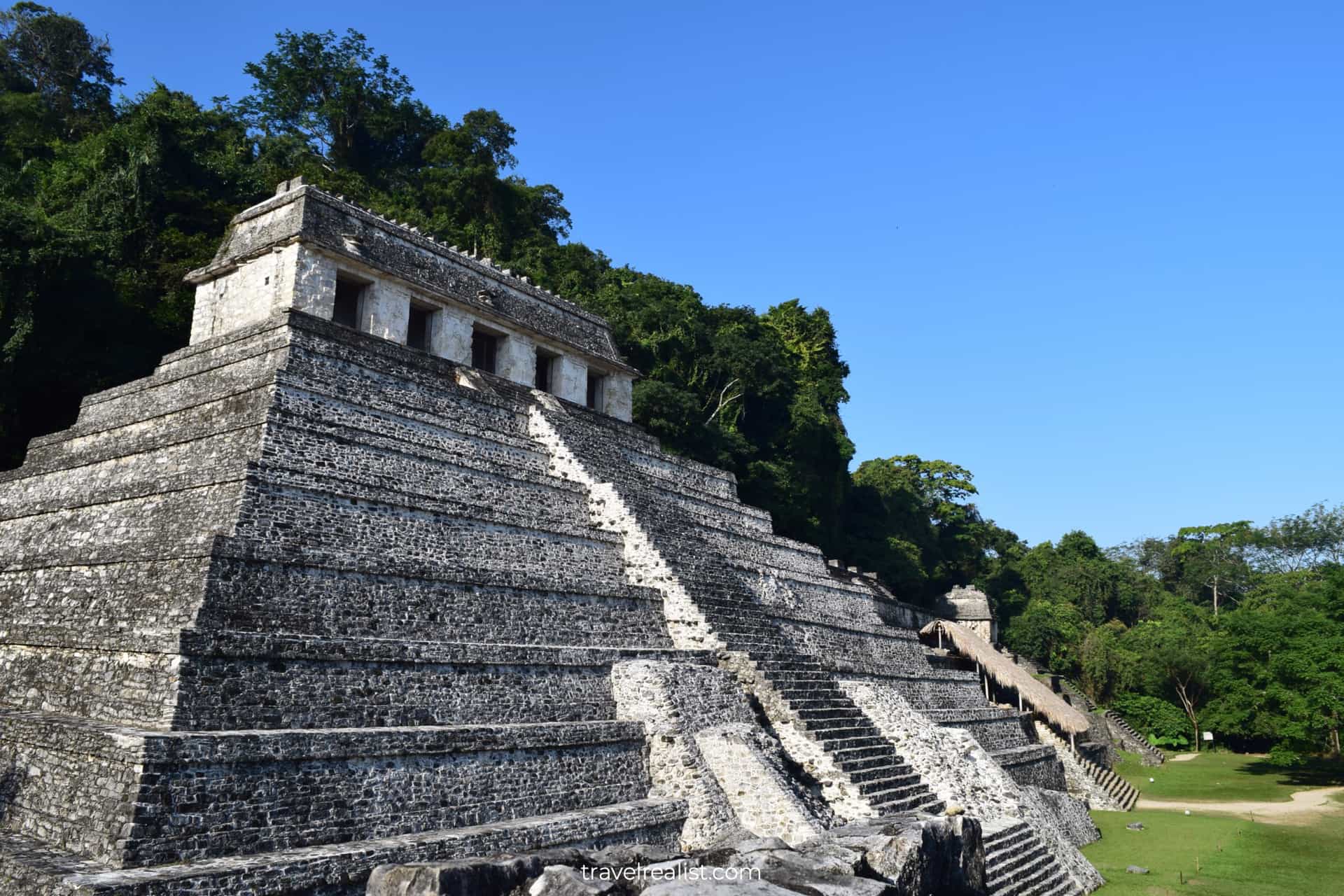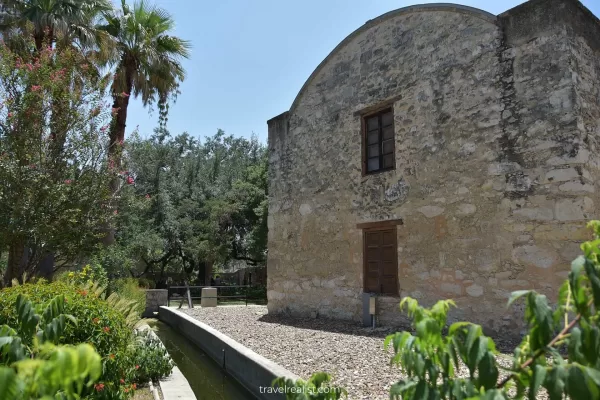Lava Beds National Monument: Caving at Your Own Pace
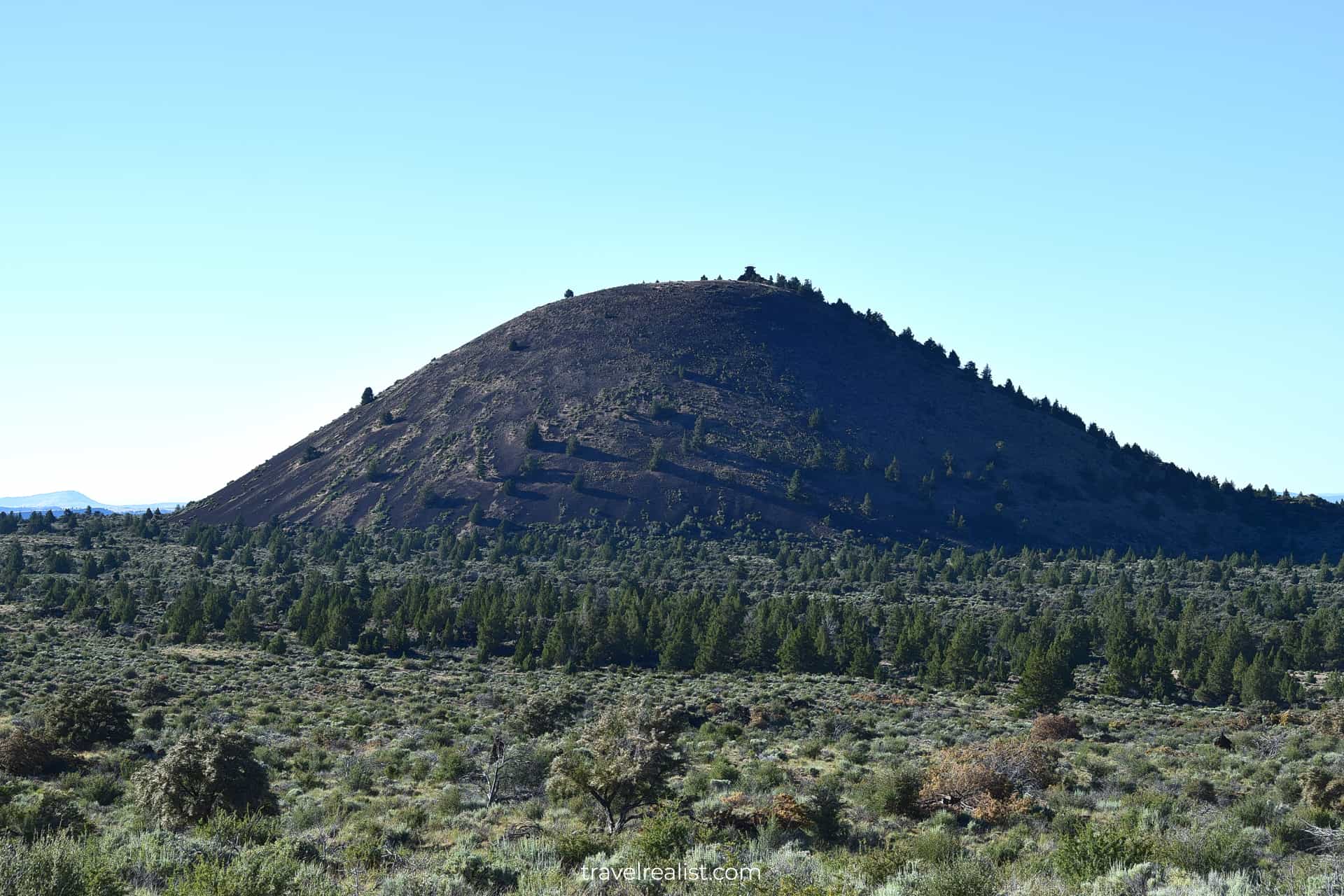
This realistic Lava Beds National Monument Guide helps you plan your next caving adventure in this remote park.
Lava Beds National Monument in Northern California has massive lava fields. The park is also home to the most lava tube caves in North America.
This post includes affiliate links that will earn us commission if you make a purchase via these links.
Sights & Places of Interest
Lava Beds has been a monument for almost 100 years. It received this designation in 1925 under President Coolidge.
The park has some 800 caves. 24 of these caves are open to exploration. The routes in these cave differ in difficulty from beginner to very challenging.
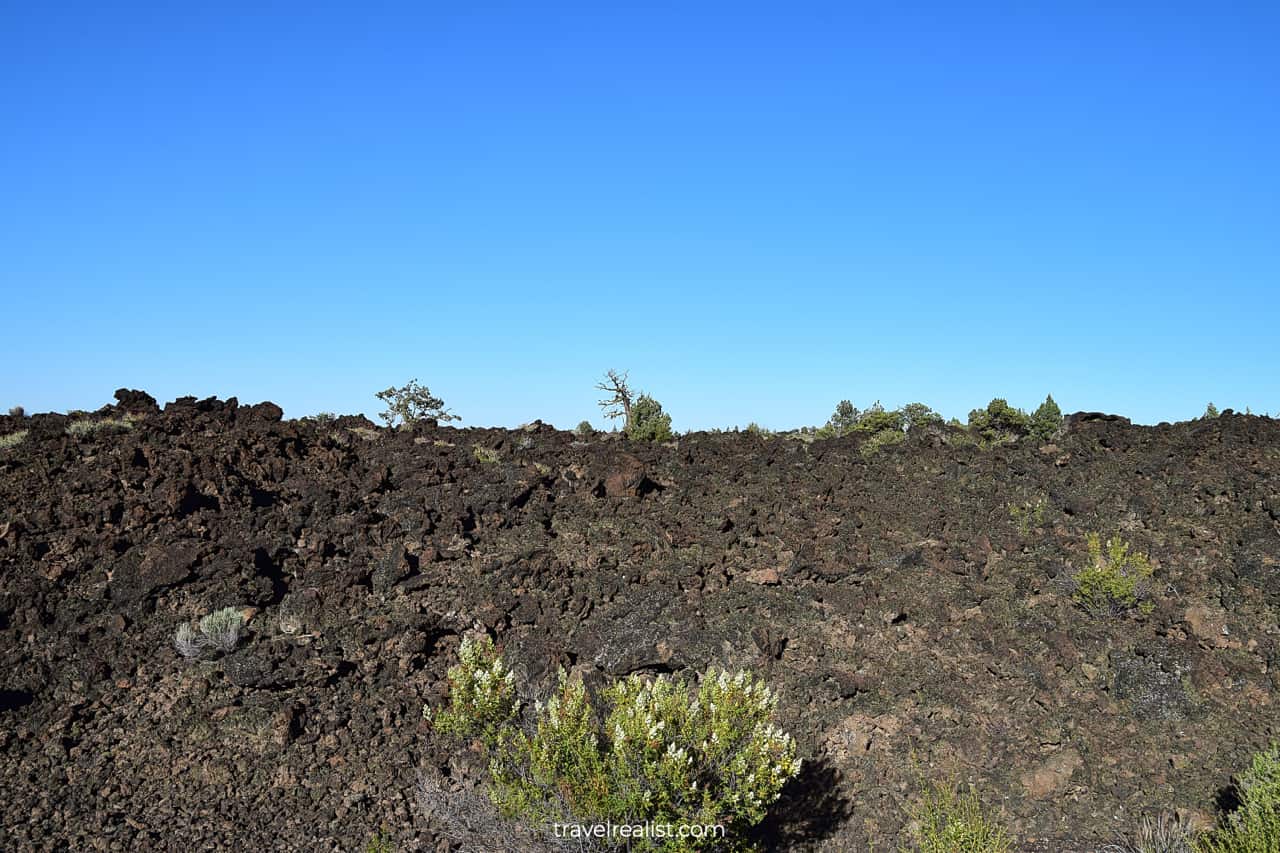
In contrast to most other parks, you can explore the caves at Lava Beds on a self-guided tour. Only Carlsbad Caverns National Park in New Mexico permits self guided exploration.
You need to get a free permit to go caving at Lava Beds. As a result, you have to arrive in the park during the Visitor Center hours.
Caves are by far the biggest attraction in Lava Beds. But there are a few above-the-ground sights. You could hike to Schonchin Butte Lookout, see Devils Homestead Flow, or enjoy the Big Nasty Trail.
This Lava Beds National Monument Guide will walk you through caves and other attractions in the park.
1. Cave Loop Road
The Cave Loop Road is the great first attraction to visit in Lava Beds National Monument. It is a short 2.3-mi (3.7-km) one-way loop drive.
This road is open to cars during Visitor Center hours. Hikers can explore it 24 hours of the day. The Cave Loop Road starts from the Visitor Center and brings you to 12 caves.
They are a fraction of 800 volcanic caves in the park. With so many caves at Lava Beds, you would need to pick just a handful to explore. Time in the park and fitness level should play a role in the selection.
Do not forget to get a free caving permit at the Visitor Center before taking the drive. You can also get advice from park rangers on the caves to visit and skip.
This Lava Beds National Monument describes the best caves for you to explore. It starts from the easiest caves to visit.
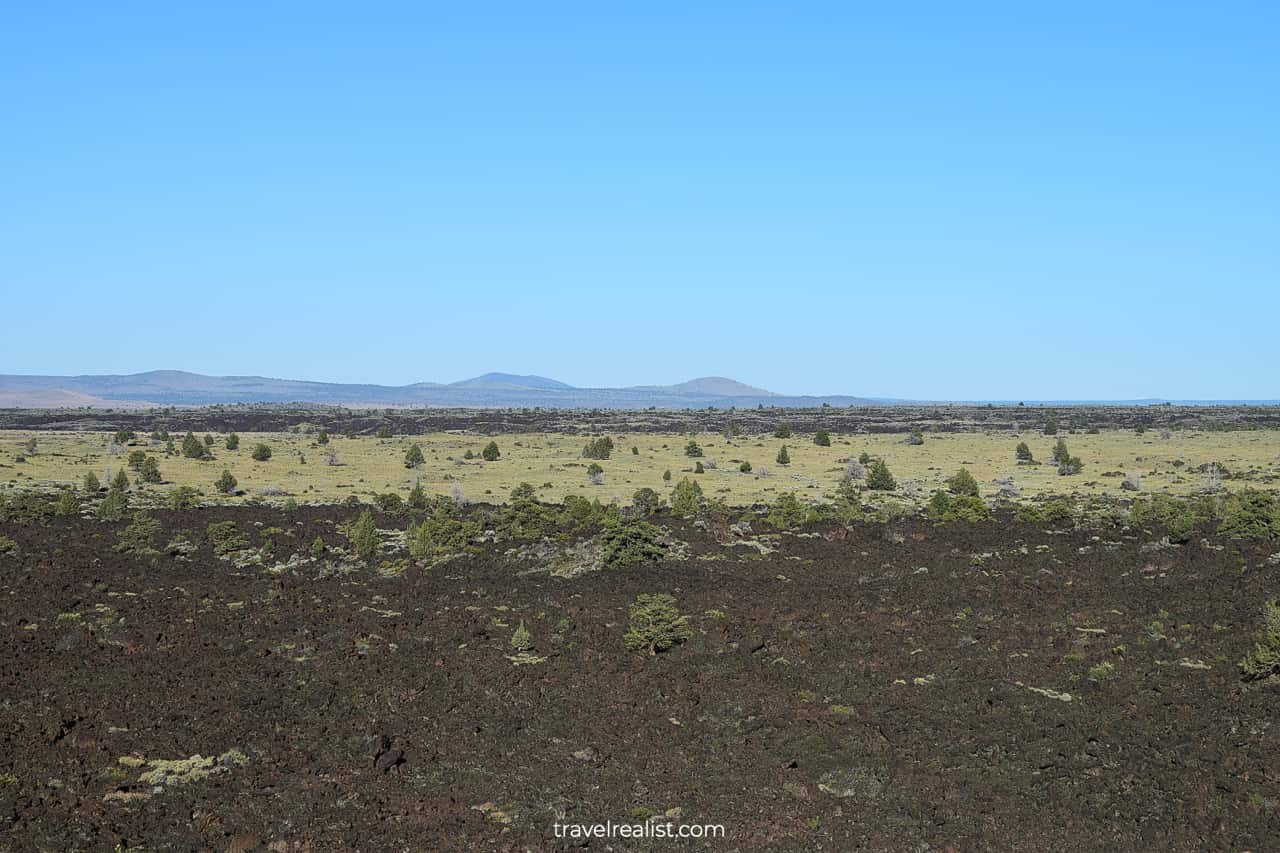
2. Mushpot Cave
Mushpot Cave is right next to the Visitor Center. You would not even need to repark to see it. All you have to do to enter this cave is take a short walk.
Mushpot Cave is a beginner cave. There is a 770-ft (235-m) paved path inside. The cave has lighting so you do not need a flashlight to explore it.
Most park visitors stop at Mushpot Cave. Yet, it is unlikely to get too crowded. It could be a good idea to head out to other caves in the park. They will bring out the spirit of exploration.
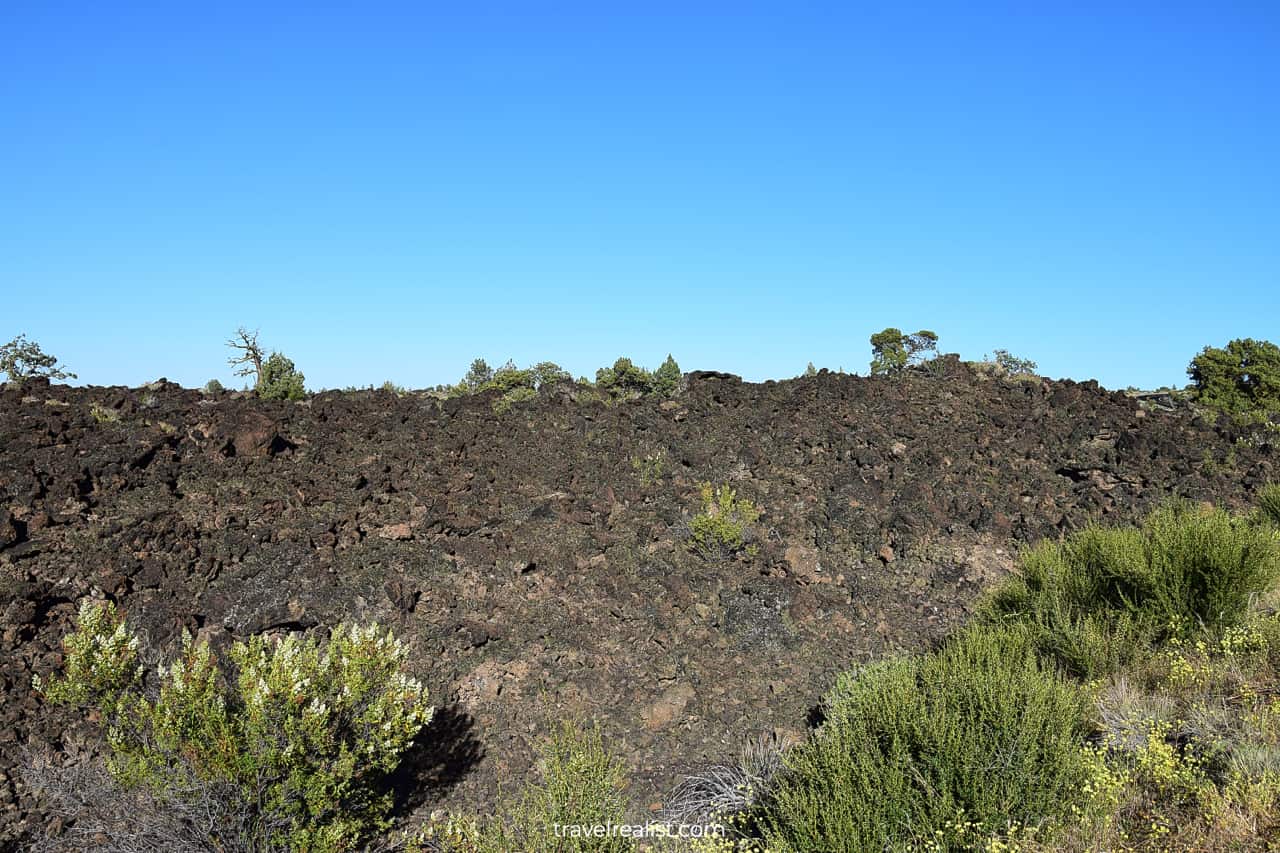
3. Golden Dome
You would not have to drive for long to find more challenging caves to visit. As a matter of fact, only Ovis Cave and Paradise Alleys are other beginner caves on the Cave Loop Road.
All other caves in this part of the park have moderately or challenging paths. You might want to gradually increase the difficulty of your caving routes. In this case, look no further than Golden Dome Cave.
This cave is 0.4 miles (0.6 km) from the Visitor Center. You need to cover the same distance (0.42 miles or 0.68 km) inside the cave to see the golden ceiling.
Get ready to use a ladder to enter and exit Golden Dome. Bring out your flashlight or headlight. You would need to duck walk a lot.
It is also a good idea to wear a helmet. It will save you from the “headache rock” at the entrance and injuries during the hike.
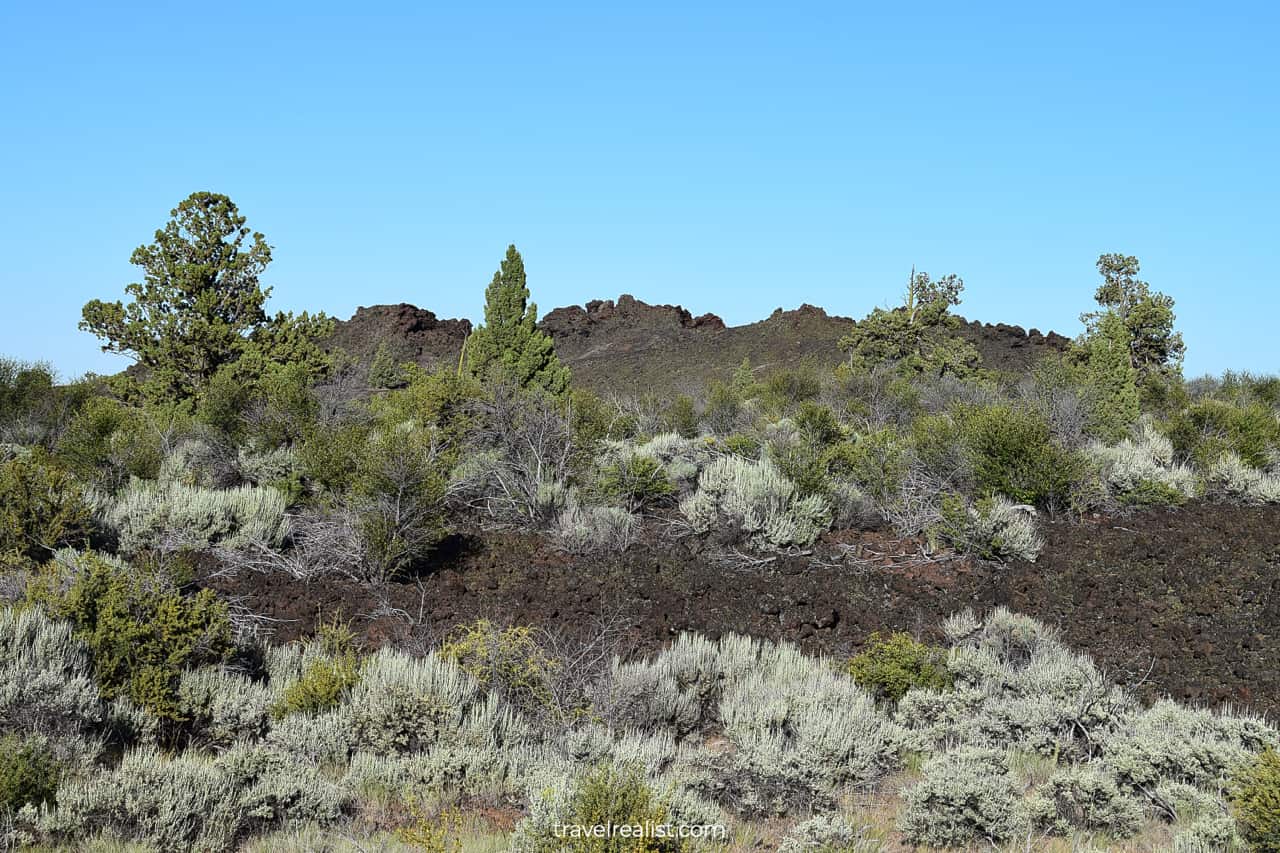
4. Challenging Caves
Golden Dome, Blue Grotto, and Sunshine are the only intermediate caves on the Cave Loop Road. Other caves are strenuous. In fact, all of the most challenging caves in the park are on the Cave Loop Road.
You can probably guess the route difficulty just from the cave names. There is no way Labyrinth, Catacombs, or Hercules Leg are easy to explore. Crawling is necessary to pass through all of them.
But Hopkins Chocolate Cave does not sound too difficult, does it? Do not be fooled by the name alone. If you decide to cave in any of these caves, follow all the necessary precautions. Cave safely and softly.
Learn as much as possible about the route in advance. The park website does a good job documenting what you could expect in the cave. Still, the reality will be more challenging that the description.
If you are confident in your abilities, take a look at Catacombs. This is the longest cave in the park. You will cover 1.3 miles (2.1 km) in the cave. Many sections involve climbing, belly crawling, and duck walking.
If crawling in a 12-inch (30-cm) high passage is not for you, you can drive to the less challenging caves. They are all outside of the Cave Loop Road.
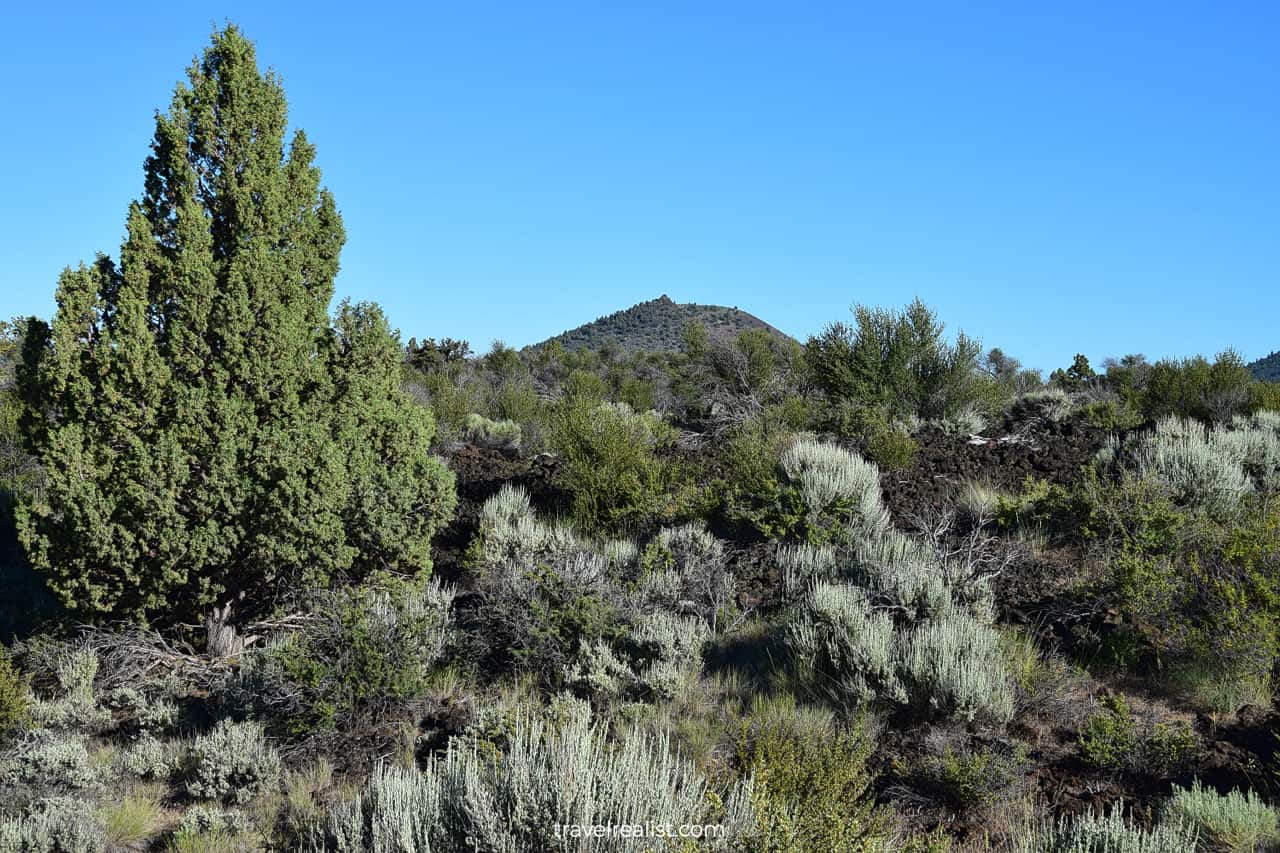
5. Valentine Cave
You would have two options for easier caves to explore: Valentine Cave and Skull Cave. The park recommends them both as easy routes to take if you have limited time at Lava Beds.
Valentine Cave is 2.2 miles (3.5 km) southeast of the Visitor Center. You would have already passed this cave if you traveled from Alturas or Lassen Volcanic.
This cave has a 0.3-mi (0.5-km) walk through large passages. There are a lot of beautiful volcanic formations on display in Valentine Cave.
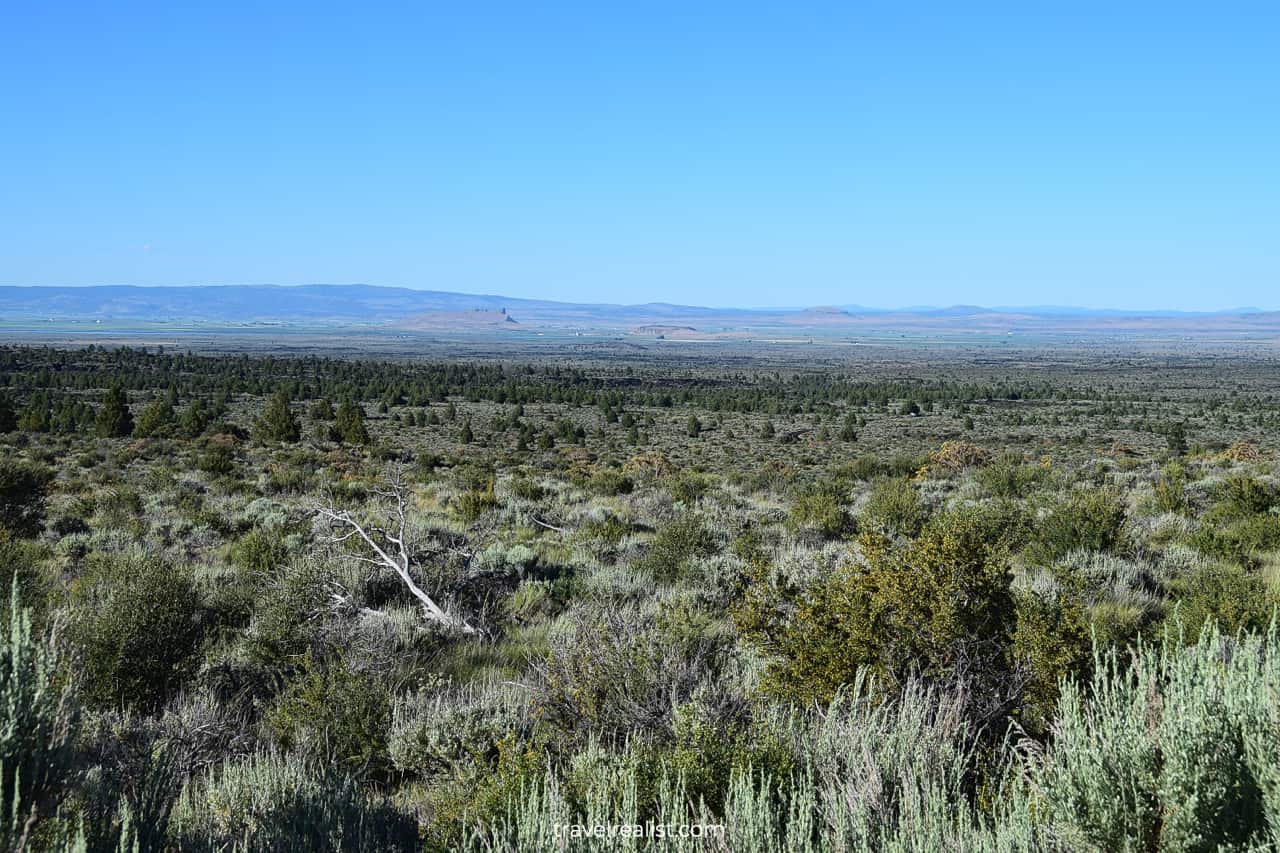
6. Skull Cave
Skull Cave is 2.5 miles (4 km) north of the Visitor Center. But there is a good reason to make it your next stop. This cave is on the way if you are traveling to Klamath Falls, Oregon and Crater Lake next.
Skull Cave has a relatively short and smooth path. You will hike just 580 ft (177 m). This massive cave is best if you are claustrophobic. There are no tight spaces or crawling in Skull Cave.
If you visit Skull Cave in the winter, you can see the ice floor. No need to drive to more remote Merrill Ice Cave or Heppe Ice Cave.
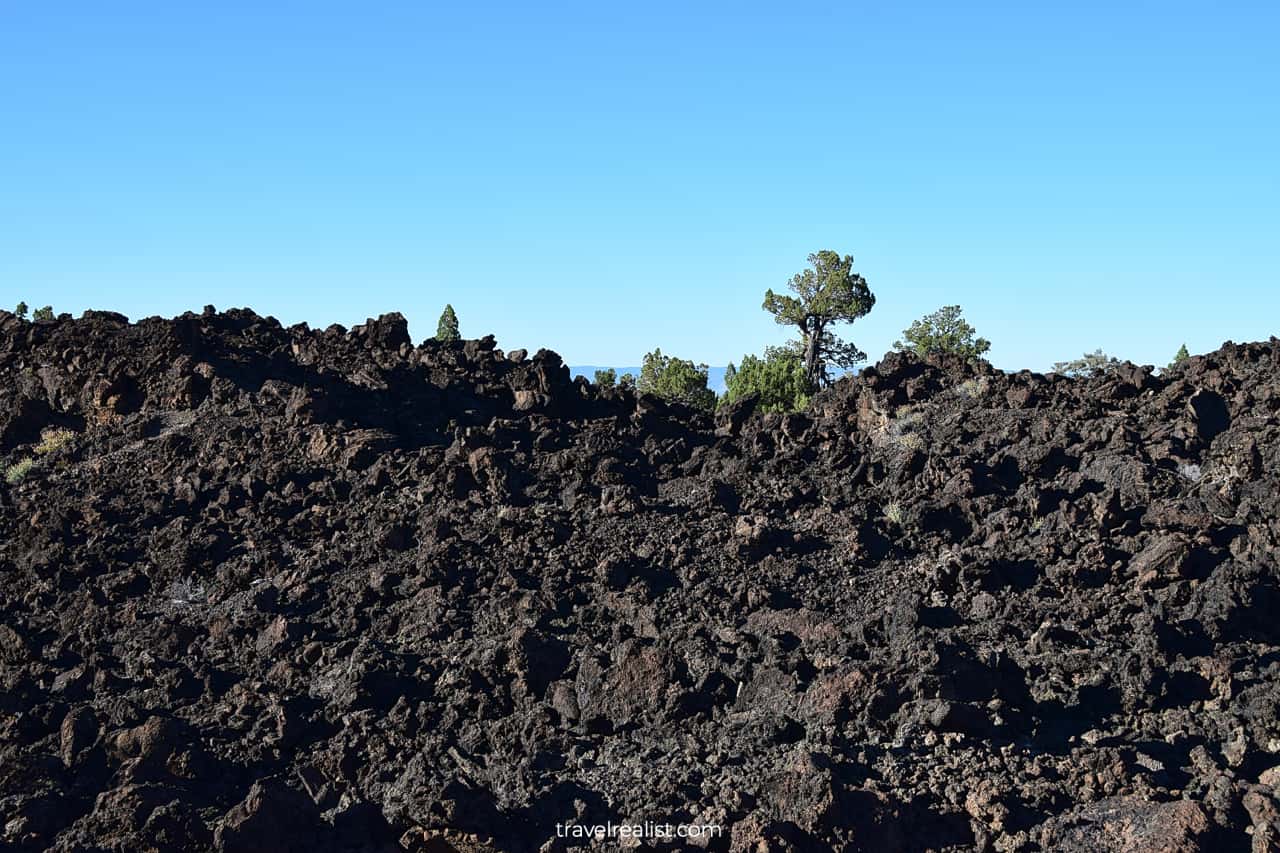
7. Schonchin Butte
You might have no time to explore other caves unless Lava Beds is your only attraction for the day. Caving might also not be your thing. Luckily, Lava Beds National Monument has a few other sights.
Schonchin Butte is one of them. This cinder cone is one of many at Lava Beds. But it is one of the few volcanic hills in the park you could hike up to.
This makes Schonchin Butte memorable. It is also quite similar to Saxholl Crater in West Iceland and Sunset Volcano Crater in Arizona.
The trailhead to the Summit Lookout involves a 0.9-mi (1.4-km) drive on a gravel road. The hike is on a 1.5-mi (2.4-km) out-and-back trail. You will gain 465 ft (142 m) in elevation.
The whole park will be visible from the Lookout. You will see Schonchin Flow, Bearpaw Butte, Hippo Butte, and Eagle Nest Butte. This viewpoint has some of the best views in the park.
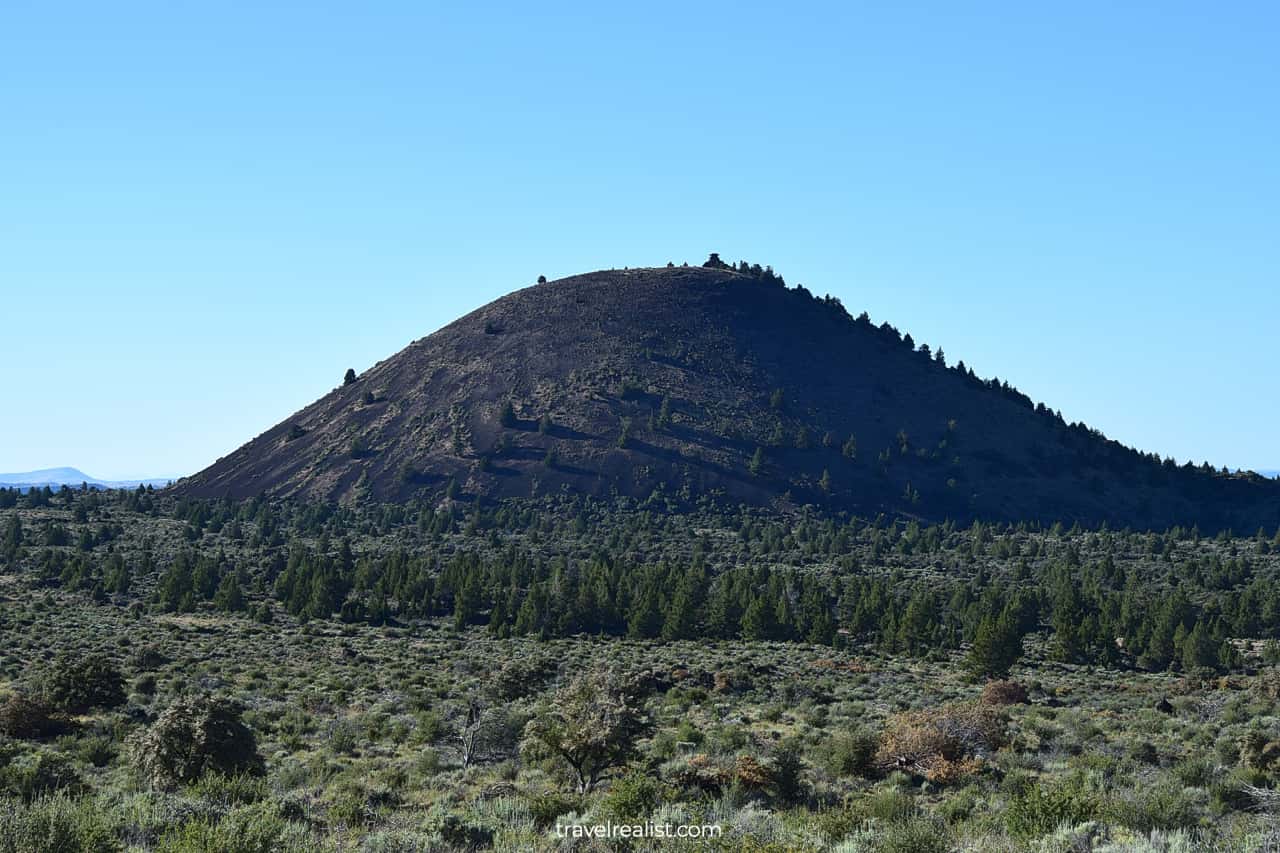
8. Devils Homestead Flow
You will pass the Castles, Balcony and Boulevard Caves, and Black Crater on the way to the next viewpoint. The Castles are two volcanic hills visible from the scenic drive.
Balcony Cave and Boulevard Caves are moderately challenging caves. The former cave is closed from mid April to mid October.
Black Crater is a small volcanic formation right next to the road. If you hiked Schonchin Butte Lookout trail, you might not find this stop very scenic.
But you should stop at Devils Homestead Flow viewpoint. This is the easiest viewpoint in Lava Beds National Monument. You can see frozen lava without needing to hike or crawl.
In fact, you can see most of the sights from this viewpoint right from your car. It is still a good idea to get out and enjoy the views.
Gillems Camp and Bluff are the last sights that without a detour if you are traveling to Klamath Falls, Oregon. The monument has a few viewpoints at Canby Cross, Hospital Rock, and Petroglyph Point.
All of them pale in comparison to the main sights at Lava Beds. You would also need to budget over 30 minutes to reach these attractions. If time is of essence, it is best to skip these stops.
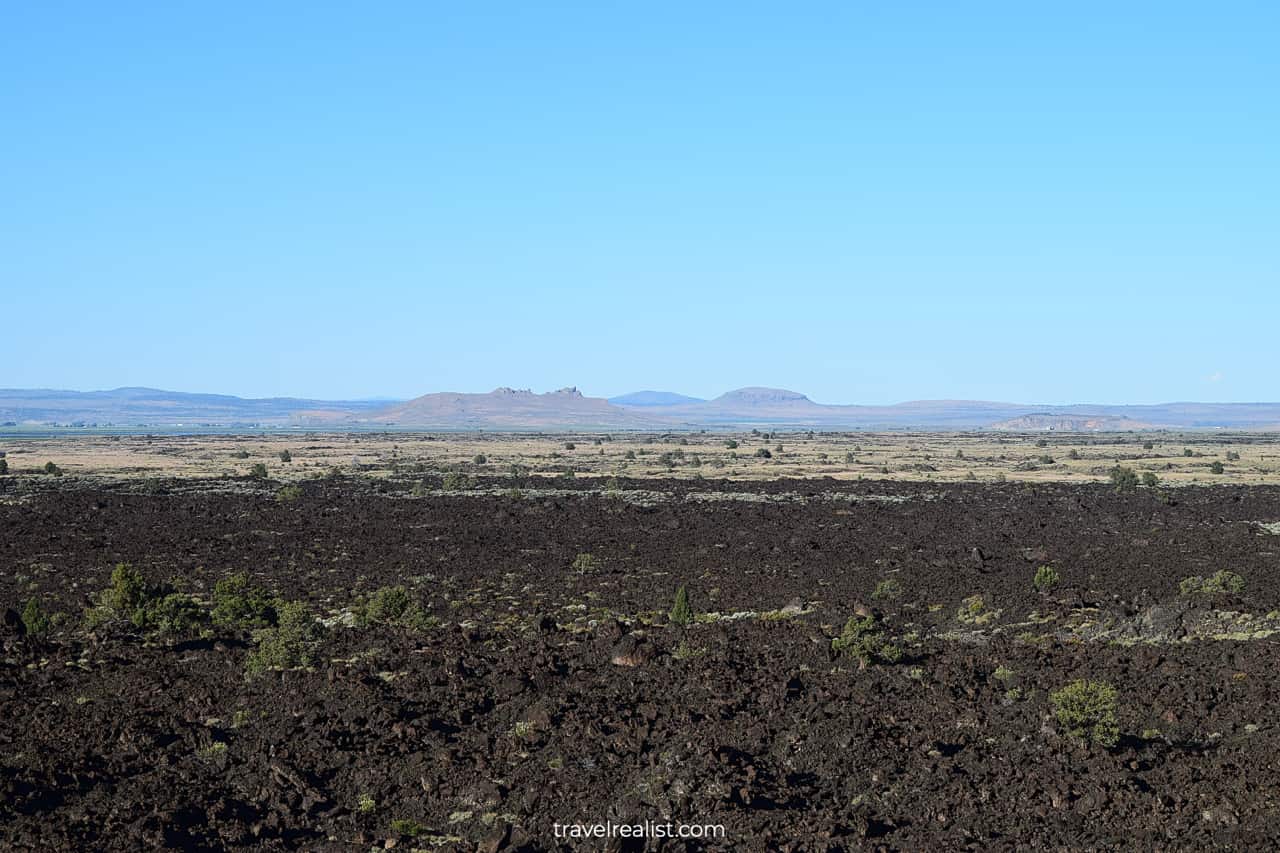
Continue with this Lava Beds National Monument Guide. You will learn more about ways to get to the sights, entrance requirements, and places to stay.
Getting to Lava Beds
Lava Beds National Monument is in the very north of California. The park is in a remote area of the state. In fact, it is easier to reach Lava Beds from Oregon than from most of California.
The park is over 2 hours from Medford, Oregon. A journey from Redding, California is nearly 3 hours each way. Neither town has a major airport.
You would need to travel even further as an out-of-state visitor. Reno, Nevada is the closest major airport to Lava Beds. It is about 4 hours away.
Sacramento is 5 hours south of the park. San Francisco Bay Area airports are all over 6 hours or more from this national monument.
There is no doubt that getting to Lava Beds is a long journey. But if you are already in this area, there is little reason to skip this park.
Most the sights of Lava Beds are just a short detour from State Highway CA-139. Lava Beds National Monument Road runs almost parallel to the state highway.
You could visit caves, buttes, and trails of this monument and quickly get back on the road. This fact sets Lava Beds apart from many other parks and monuments.
Stop by Pit River Falls and Canyon if you visit Lava Beds after Lassen Volcanic National Park. This viewpoint is a great spot to stretch your legs with an amazing view.
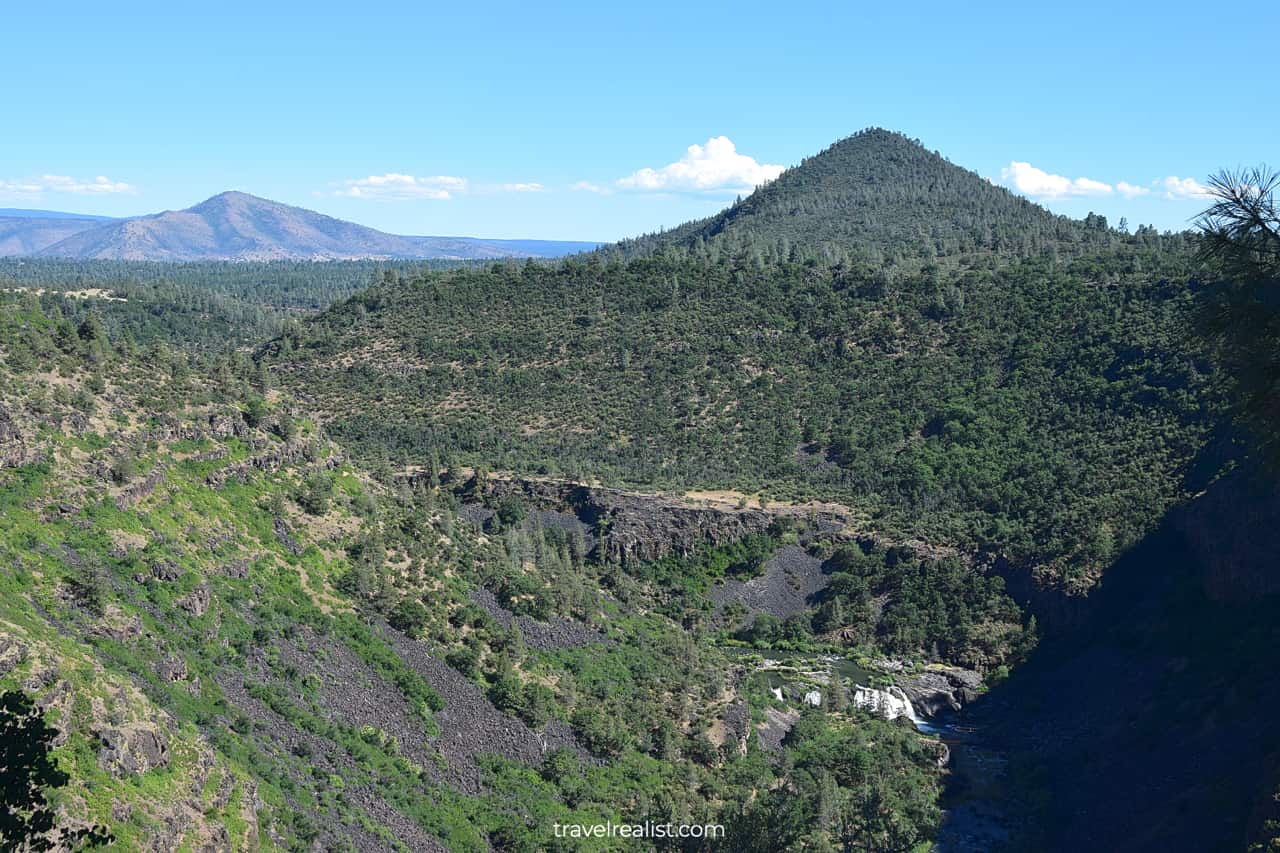
Where to Stay near Lava Beds
The location of Lava Beds National Monument makes it difficult to find a nearby place to stay. The Indian Well Campground and boutique places to stay are your best options for miles.
You would need to drive to find towns with a handful of places to stay to choose from. Klamath Falls, Oregon and Alturas, California are your best options.
Both towns are about 50 miles (80 km) from the park. It takes just over an hour to reach Lava Beds from either Klamath Falls and Alturas.
The latter town is north of the park. It is the main gateway to Crater Lake National Park. There are plenty of places to stay that could work for different travelers. It is on the way to other sights in this region.
Alturas is a small town near California, Oregon, and Nevada state lines. It is out of the way from major routes and sights. Yet, this town could be a better option if you drive from Lassen Volcanic that day.
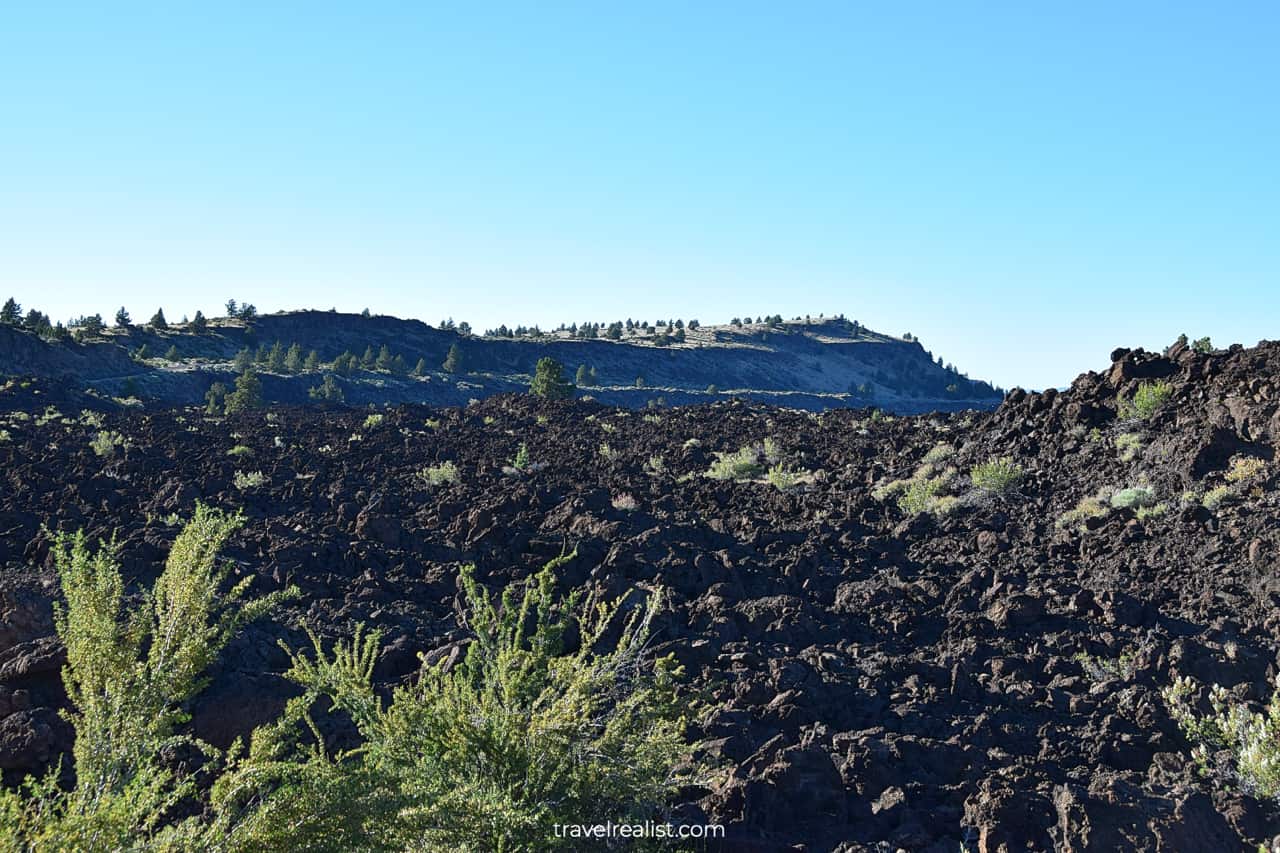
Entrance Requirements & Passes
Lava Beds National Monument is open year round. You can enjoy the park trails every day from sunrise to sunset. Just display the Interagency pass and get ready to hike Whitney Butte, Lyons, or Big Nasty Trails.
America the Beautiful annul pass covers the admission fees to the monument. Without the pass, the fee is $25 per car, $20 per motorcycle, or $15 per person.
Caving at Lava Beds is a self guided activity. But you would need to prepare thoroughly if you plan on caving in this national monument. This activity requires a permit.
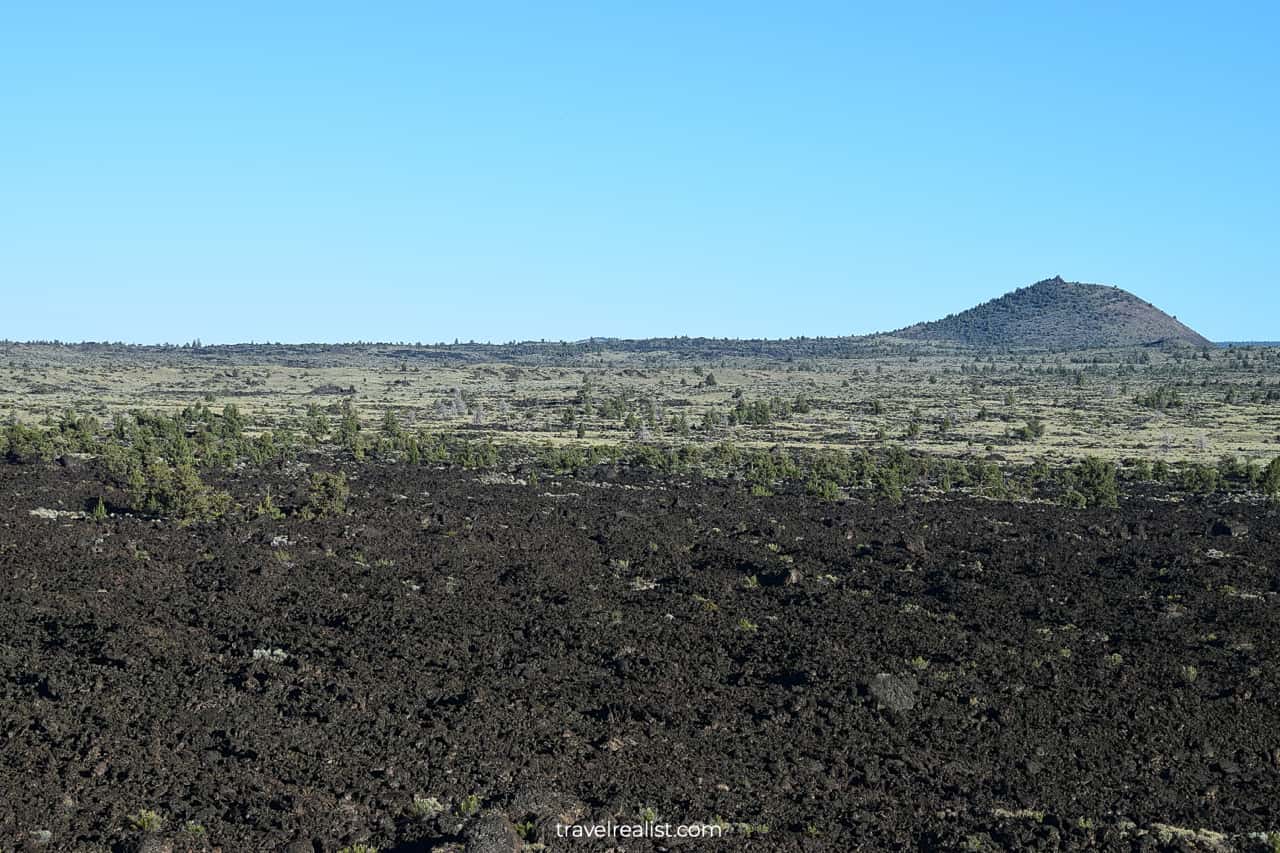
Still, there is no permit lottery like in Zion or advance reservations like in Oregon Caves or Jewel Cave. You just need to get a free permit at the Visitor Center on the day of your trip.
That means that you have to be in the park between 9:30 a.m. and 5 p.m. in the summer. Winter hours could be even shorter. Keep in mind that the park might close roads temporarily due to snow.
You would want to be at the Visitor Center before noon. This way, you can pick up the permit, pick a cave or two, and have plenty of time to explore.
As a result, you cannot add Lava Beds to the end of your Crater Lake or Lassen Volcanic day trip. You would need to plan your trip around caving in this national monument.
The park closes access to the Cave Loop Road when the Visitor Center is not open. You should not attempt to enter any park caves without a permit or after hours.
Safety and wildlife protection concerns often result in seasonal cave closures. So it is a good idea to check what caves are open before visiting Lava Beds.

Takeaways: Lava Beds National Monument
Lava Beds National Monument is a nice park. Its remote location makes exploration quite challenging. But the fact that you could go caving at your own pace makes up for a long drive.
If you like self guided cave exploration, you should visit Lava Beds. Make sure to plan your trip to reach the Visitor Center before noon. Pick up your permit and enjoy Mushpot, Valentine, and Skull Caves.
Gradually increase the route difficulty if you have experience and equipment. Look into Golden Dome, Blue Grotto, or Boulevard Caves next.
Only attempt strenuous cave routes if you understand what you are getting yourself into. No guides means that you are on your own when exploring Catacombs, Labyrinth, or Hercules Leg Caves.
You might not find Lava Beds National Monument as exciting if caving is not your favorite activity. In this case, skip this park in favor of Crater Lake, Oregon Caves, Redwood, and Lassen Volcanic.
The same advice is true if you cannot visit Lava Beds during the Visitor Center hours. You cannot go caving without a permit.
That leaves park trails and viewpoints. All of them are not as scenic as in Sunset Crater Volcano and Hawaii Volcanoes.
Take a look at this Lava Beds National Monument Video Guide. And visit the YouTube channel for the latest videos.
Frequently Asked Questions
Lava Beds has the highest concentration of lava tube caves in North America. You can visit 24 of 800 caves in the park at your own pace without a guide.
Lava Beds National Monument is in remote part of Northern California. The park is near Oregon state line. You can reach the park in an hour from Klamath Falls, Oregon.
There are few places to stay in or right next to Lava Beds. Your best shot is to look for places to stay in Klamath Falls, Oregon or Alturas, California. These towns give you choice in places to stay.
There are about 800 lave tube caves in Lava Beds. 24 of these caves are open to public.
Summer or early fall are the best times to visit Lava Beds. You are less likely to run into road closures in the summer than in the winter.
Visitor Center has longer opening hours. It means that you have more time to pick up your caving permit.
Longer daylight gives you more options to explore the caves. You will have enough time to visit a few beginner and intermediate cave routes or one longer challenging cave.
Lava Beds welcomes about 100 thousand visitors each year. Most people visit this park in the summer.
Lava Beds is in a remote part of Northern California. The park is far from major airports. Reno, Nevada and Sacramento, California are the closest large airports to the park.
Safe realist travels!


